Join Our Newsletter
|
|
Thank you for Signing Up |


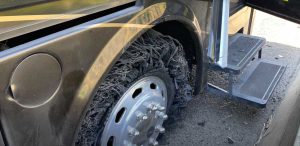
A tire blowing out is a scary experience. Especially if the tire is attached to a 56,000-pound motorhome. Jim Bedard was on the phone with our President, Jeff Bown, ordering tires because he noticed a wobble while coming off a mountain. He was planning to pull off at a safe location in just 1.5 miles. However, during this call, his right steer tire blew out on the interstate. He says that “It happened so quickly! One moment I was driving along, and then I heard and felt an explosion. My motorhome started violently shaking, and I was already in the other lane.” Luckily, he gained control and brought the motorhome safely to a stop without it becoming something catastrophic.
In the video, you can hear how shaken up Jim was when he was relaying to Jeff what had just happened. He recommends that if you are ever in this situation to never automatically brake or accelerate but rather gain control first and then slowly brake to a stop. As Dirty Harry would say, “A man has got to know his limitations.” In this case, tire limitations. To help avoid this scary situation happening to you, we have provided surefire signs that your tires need to be replaced.
1. The tire warning light
If you have a newer model, you will have a low tire pressure warning light system. This is a little indicator that pops up on your dash and looks like a “U” with an exclamation point in the middle. This indicates that tire pressure in at least one of your tires is too low compared to the manufacturer’s recommended pressure. Your options are to; add some air to your tires by doing it yourself, or bring it to a mechanic to figure out which tire was low and why. Sometimes, low pressure is indicative of a larger problem.
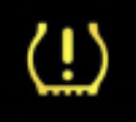
2. Low tire tread
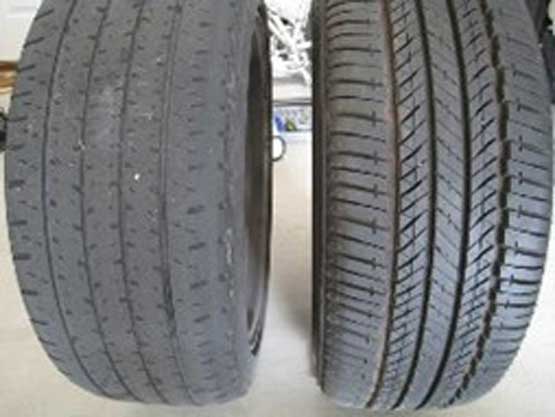
Tire tread - the ribs and grooves over the outside of the tire - is an incredibly important feature. It ensures your vehicle has traction, and poor traction will mean you are slipping and sliding over the road and get worse gas mileage. Low tire tread is a clear warning sign. It could be extreme wear all around, or just on the outside or center of the tire. It can also be a sign of other problems, like over or under-inflation, misalignment, or damaged tires. Ask your local car repair shop for the diagnosis when you notice this problem. These warning signs could all lead to a flat or blowout.
3. Cracked tires
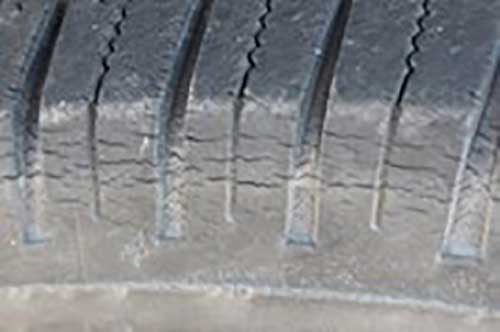
This will often look like little cracks or holes in the tire itself. Cracked tires could be a sign of a future blowout, so it is definitely something you need to get checked soon. It may also be a sign that your tire is steadily leaking. Cracked tires can also be the result of direct damage to the tire, such as hitting a pothole or curb.
4. Wear on one side
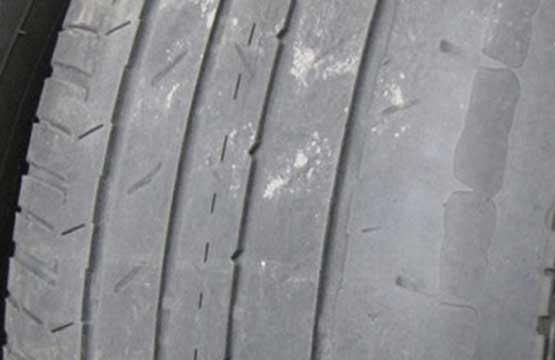
When you notice wear on the center strip of the tire’s tread; it is a sign of over-inflation, while wear on the edges represents un der-inflation. However, wear down just one side is indicative of something else. It could mean that your tires are nonaligned, with one edge hitting the road more of the time. It might also be a sign that you have damaged springs, ball joints, or other related parts. The best course of action is to talk to your mechanic. You will most likely need to have tires replaced, an alignment performed, and adhere to a more frequent tire rotation schedule.
5. Tire vibration
All cars vibrate, especially on rough roads. Even so, you probably know when something just feels “off.” If your tire has a serious vibration, it is a warning sign that you have a bigger issue at play. It could be an alignment problem or even a damaged suspension. Bring your vehicle to a mechanic as soon as possible if you notice an abnormal amount of vibration.
Your tires are some of the most important safety features on your vehicle. Even so, many drivers overlook the importance of high-quality, well-maintained tires.
So, if you see any of these warning signs, talk to your mechanic right away.